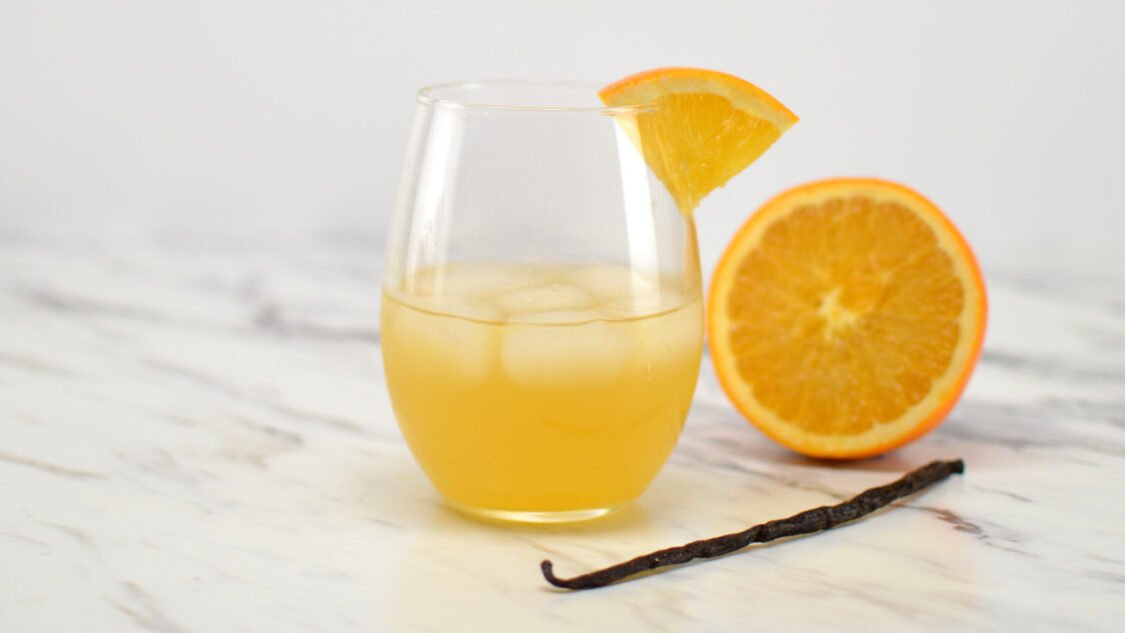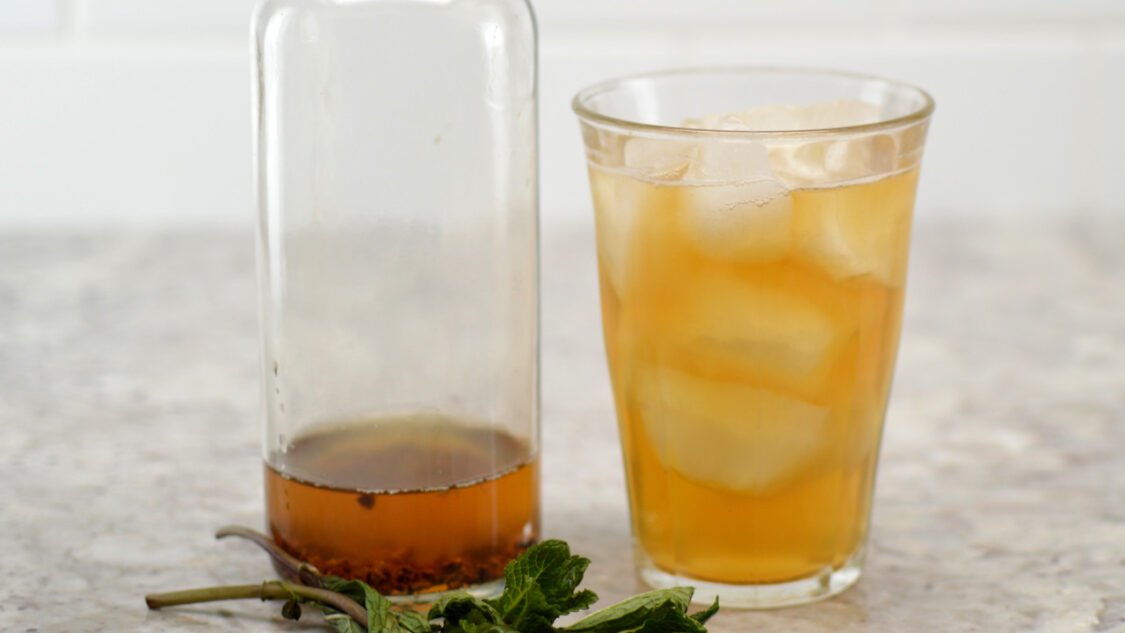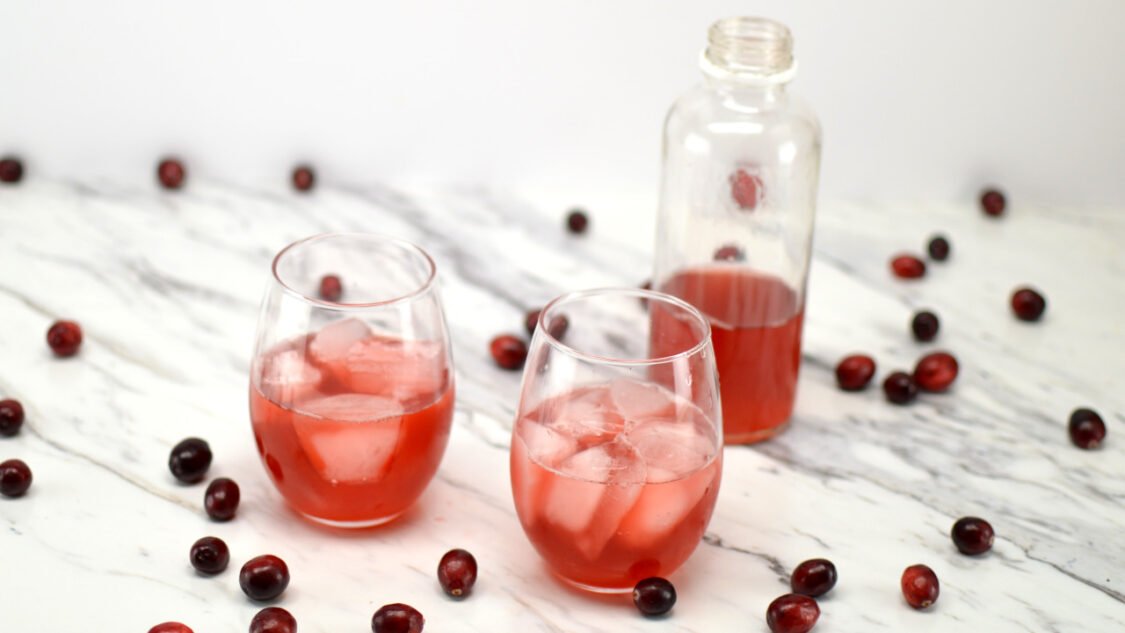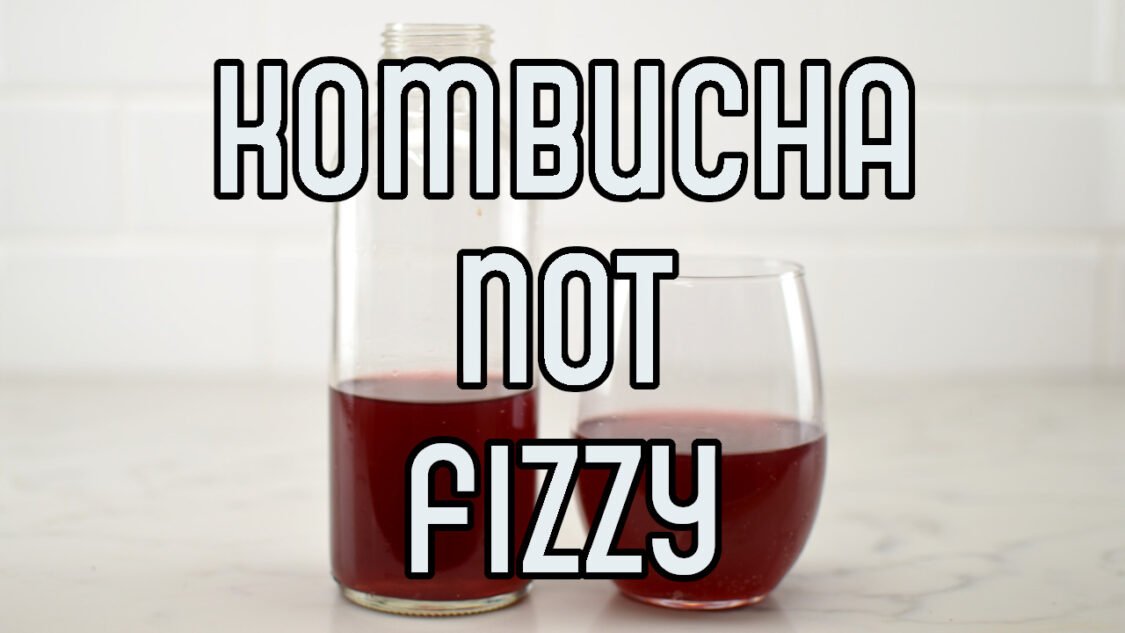Raspberry Gingerade Kombucha

Raspberry gingerade kombucha pours from the bottle with a deep ruby red color imparted by the raspberries with a sweet and slightly tart aroma of raspberries mingling with the zesty and pungent scent of fresh ginger.
The combination of the two flavors is perfectly balanced which will delight anyone that loves fruity, tangy and slightly spicy drinks. Raspberry flavor is dominates at the beginning of each sip followed quickly by the complexity of the pungent and spicy ginger. It has a light effervescence, making it refreshing and easy to drink, especially over ice on a hot mid-summer day!
Raspberry gingerade kombucha is also featured in the base of my Raspberry Ginger Fizz Kombucha Mocktail.
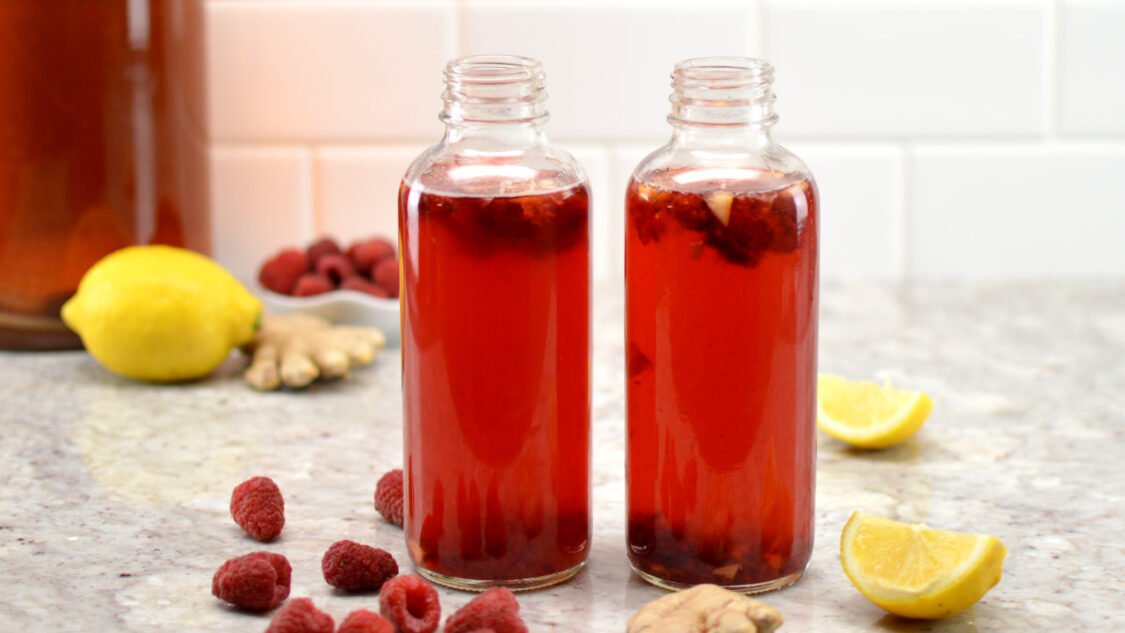
Kombucha Fermentation Overview
There are two fermentation phases when making kombucha:
1. Primary Fermentation: This is when you transform sweet tea into tart and tasty kombucha (see my guide to brewing homemade kombucha here).
2. Secondary Fermentation: This is when you carbonate the kombucha by adding flavor and sugars (like raspberries ?) and bottling it.
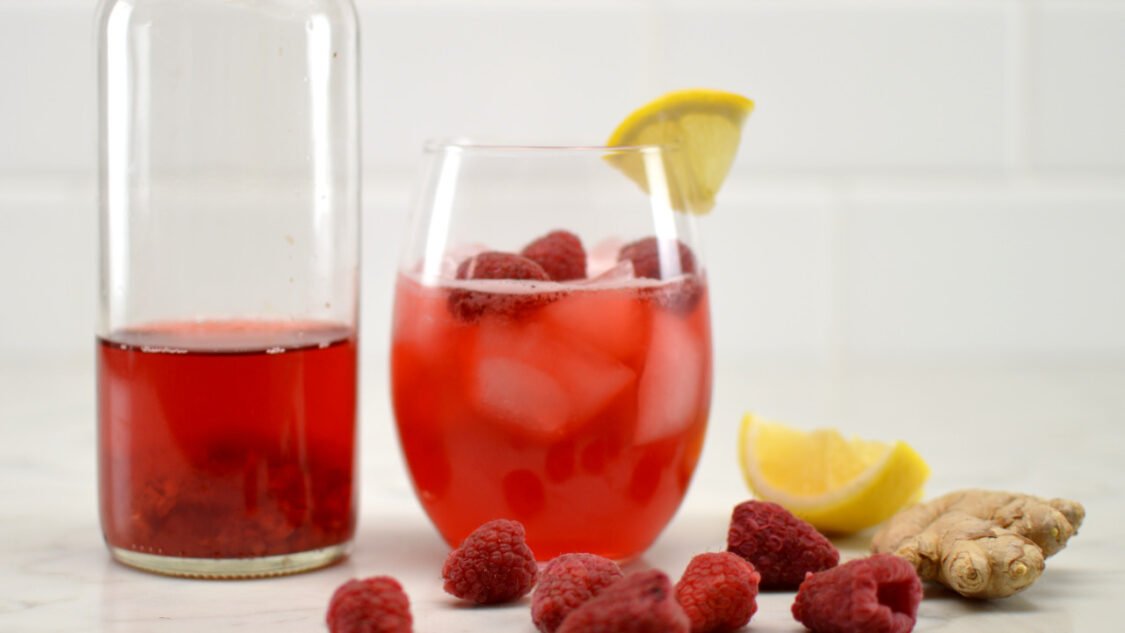
Preparing for Secondary Fermentation
This recipe makes about 7 x 16 fluid ounce bottles of finished kombucha (from a 1-gallon batch of unflavored homemade kombucha aka from your primary fermentation).
Reserve 2 cups (about 16 oz / 0.47L) kombucha and your SCOBY from your completed primary fermentation and set aside – you will use this as your starter for your next gallon batch of kombucha.
With your kombucha starter tea and SCOBY placed aside, you now have enough kombucha left to flavor and fill your bottles. This guide assumes are using 16 oz. glass bottles which are a popular choice for kombucha; however, there are many options for bottling kombucha.
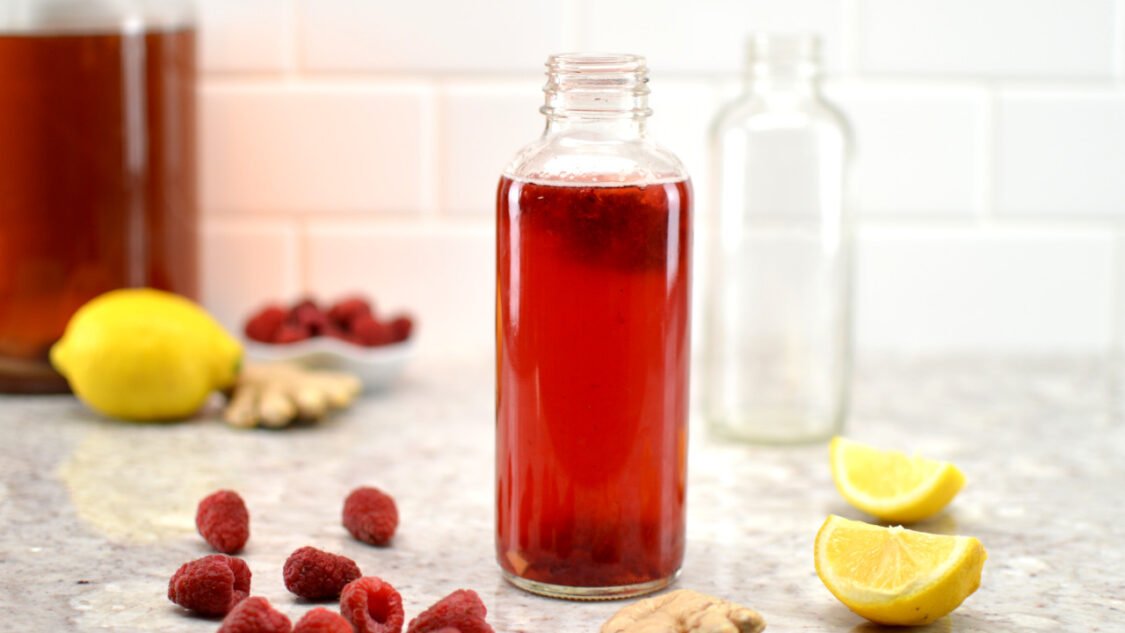
Ingredients to make Raspberry Gingerade Kombucha
Kombucha Finished kombucha from your first fermentation is the base to which you will add the raspberry and ginger flavors.
Raspberries: Raspberries are small, deep colored berry which has a tender texture, a sweet delicate taste and a enticing aroma. The taste is slightly green, a bit acidic and naturally sweet. Raspberries evoke sensations of fresh juicy fruit with a background of woody notes and floral undertones.
Peak season for raspberries is the middle of summer, but they are available year-round in most areas as both fresh and frozen. either works great for this recipe,
Ginger: Ginger is an aromatic herb that pairs well with both sweet and savory foods. It has legendary health properties, primary of which is that it’s great at calming an upset stomach with anti-inflammatory properties, so it’s great for sore muscles and aches and pains. In addition, it can help to manage blood sugar, cholesterol, and even might positively impact brain health.
Fresh ginger has slightly peppery and sweet taste, with a pungent and spicy aroma.
Look for firm ginger “hands” with a taut peel. It should not look wrinkled or feel soft. To use, peel the taupe skin off, then slice, chop, or grate. Frozen ginger is typically available in pre-portioned packets that of one teaspoon nuggets. Frozen ginger is a little less intense than fresh ginger and is a really useful keep on hand in for use in short notice. Ground ginger is not as strongly flavored but has a similar warm bite and a touch of sweetness. Fresh or frozen ginger works best in kombucha
Like garlic, ginger mellows when cooked and will become bitter when burned. The exception is that ginger becomes even more spicy when boiled in a syrup. For more info on that check out how to make great mocktails
Sugar: A touch of additional sugar for bacteria and yeast to feed on which creates carbonation–extra fizzy goodness. When filling 16 ounce bottles I’ve found a sugar cube has the right amount of sugar (1 tsp) for carbonation and is a convenient way to add the right amount without the mess.
How to make Raspberry Gingerade Kombucha
Add Flavors: Divide raspberries and ginger between the bottles.
Bottle: Transfer kombucha to fermentation bottles.
Condition: For 3 to 10 days, until it reaches the carbonation level you like.
Enjoy: Chill in the fridge before serving and strain out fruit pieces when pouring (optional)

Raspberry Gingerade Kombucha Recipe
Yield: 7 bottles • Active time: 20 minutes • Total time: 3 -10 days
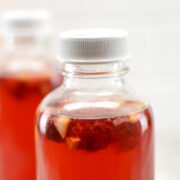
This recipe assumes you are doing a secondary fermentation (flavoring and carbonation) in the bottle. You may also incorporate a third fermentation using the same proportions but following the third fermentation steps.
Ingredients:
1 gallon homemade kombucha from a first fermentation, 3.7 L
1 cup fresh or frozen raspberries, 123 g
2 Tbs fresh ginger, finely chopped (about 2 knobs)
7 sugar cubes or 2 Tbs white sugar 12 g
Instructions:
Prepare raspberries: Lightly mash the raspberries in a small bowl. This will give them more surface area to infuse the kombucha with raspberry flavor
Prepare ginger: Rinse and finely chop the ginger. Stir into mashed raspberries and combine thoroughly
Flavor: Evenly raspberry-ginger mixture between the bottles
Sweeten: Add one sugar cube per 16 bottle or evenly divide sugar between bottles (about 1 tsp per 16 0z bottle)
Bottle: Transfer kombucha into fermentation bottles, leaving about 1 inch empty at the top. Seal tightly.
Ferment: Place in a dark, room temperature area for 3 to 10 days, until it reaches the carbonation level you like. This process will go faster in warmer climates, and slower in cooler climates.
Enjoy: Chill your raspberry gingerade kombucha bottles in the fridge before serving and strain the kombucha to remove fruit pieces when serving (optional).
Homemade raspberry gingerade kombucha can be stored in the fridge, tightly sealed, for several weeks.
Tips & Tricks:
Make sweet tea for your next batch the night before you flavor and bottling and let it cool on the stove overnight so that you can flavor your kombucha and get your next batch started at the same time.
If this is your first time brewing, it may be helpful to use a plastic water bottle as a gauge. Fill a recyclable plastic bottle with kombucha (leaving 1.5 inches empty at the top). When this bottle becomes rock hard, you’ll know the glass bottles are also ready. This will help you gauge how long it take for kombucha to carbonate your climate and will prevent bottle explosions.
Nutrition Information:
Kombucha Recipes You Might Also Like
Helping you learn to brew kombucha, find inspiration for new kombucha flavors and use kombucha to make kombucha mocktails


